Today, it was farewell to the Diamond Princess and Choo, our very helpful and unobtrusive cabin steward. We left him a little recycling to take care of when we left… one week’s worth of sake that we ‘smuggled’ onto the ship by very cleverly putting it in our backpacks or our shopping bags and putting it through the ship’s scanners as we re-embarked in each port.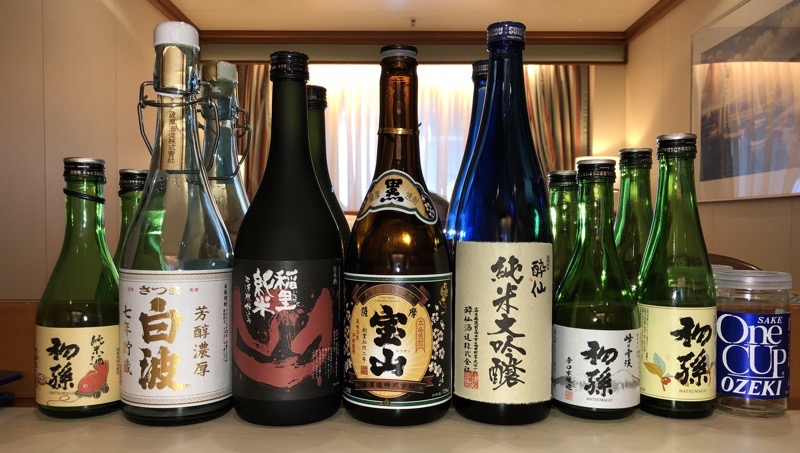 Now, everyone, knows transit days suck balls… big hairy sweaty ones on occasion, and this is why the No 1 Golden Rule of Travel is: Never plan to go sightseeing on transit days! So what did these very well travelled individuals plan for today? Well, we broke the stupid rule and planned to disembark the ship in Yokohama, take a train to Kyoto, put our luggage in storage, and go to the famous Minamiza Theatre in Gion to see the Mikayo Odori Spring Dances. It’s barely a 20 minute trip on the Shinkansen from Osaka to Kyoto, and ideally, we would have come back at some point over the next week to see this uniquely Japanese cultural experience – but the season quite literally ends today, and we were able to buy tickets for the second last performance for 2019. So here we were, breaking the Travel Rules.
Now, everyone, knows transit days suck balls… big hairy sweaty ones on occasion, and this is why the No 1 Golden Rule of Travel is: Never plan to go sightseeing on transit days! So what did these very well travelled individuals plan for today? Well, we broke the stupid rule and planned to disembark the ship in Yokohama, take a train to Kyoto, put our luggage in storage, and go to the famous Minamiza Theatre in Gion to see the Mikayo Odori Spring Dances. It’s barely a 20 minute trip on the Shinkansen from Osaka to Kyoto, and ideally, we would have come back at some point over the next week to see this uniquely Japanese cultural experience – but the season quite literally ends today, and we were able to buy tickets for the second last performance for 2019. So here we were, breaking the Travel Rules.
Here’s some Shinkansen info for players at home – if you are ordering a Japan Rail Pass online from home (for unlimited rail use for a specified time) you can NOT reserve seats on specific journeys the way you can if you are just purchasing a single trip… so what happens is you will turn up to the train station with your Rail Pass and have to make your way down the platform of the train you want to catch and line up to try and get into one of the unreserved carriages (usually the first three carriages of each bullet train which goes every 3-5 minutes). At about 90 persons per carriage, that sounds like a lot of unreserved seating is available – and with a 2 hour journey ahead of us, I’m not capable of contemplating a standing journey of that duration. But alas! It is not so! The train we were attempting to board in Yokohama was coming from Tokyo station and each train was full by the time it arrived in Yokahama. After seeing about three or four trains come and go where our options were to take a standing position or wait for another, we decided to switch platforms and go backwards to Tokyo station and get on where the trains were starting out from. This turned out to be a good move – most of the trains were leaving Tokyo totally full and people jumping on to stand, but we were able to wait and get a seat for the journey… the lesson here is: it sure helps travelling with someone who knows the ins and outs of public transport sometimes!
With only a small delay of about forty minutes, we arrived in Kyoto and made our way to Kyoto Central Post Office which has a very convenient luggage service – cheaper than the DIY coin lockers that are scattered throughout Kyoto station and it is manned until 19:00… Just in case you ever find yourself in Kyoto and in need of storage solutions. They also do a hotel delivery service for Y1500 per piece, which sounds like a brilliant idea if you have limited time to enjoy the city and can’t check into your hotel until late afternoon.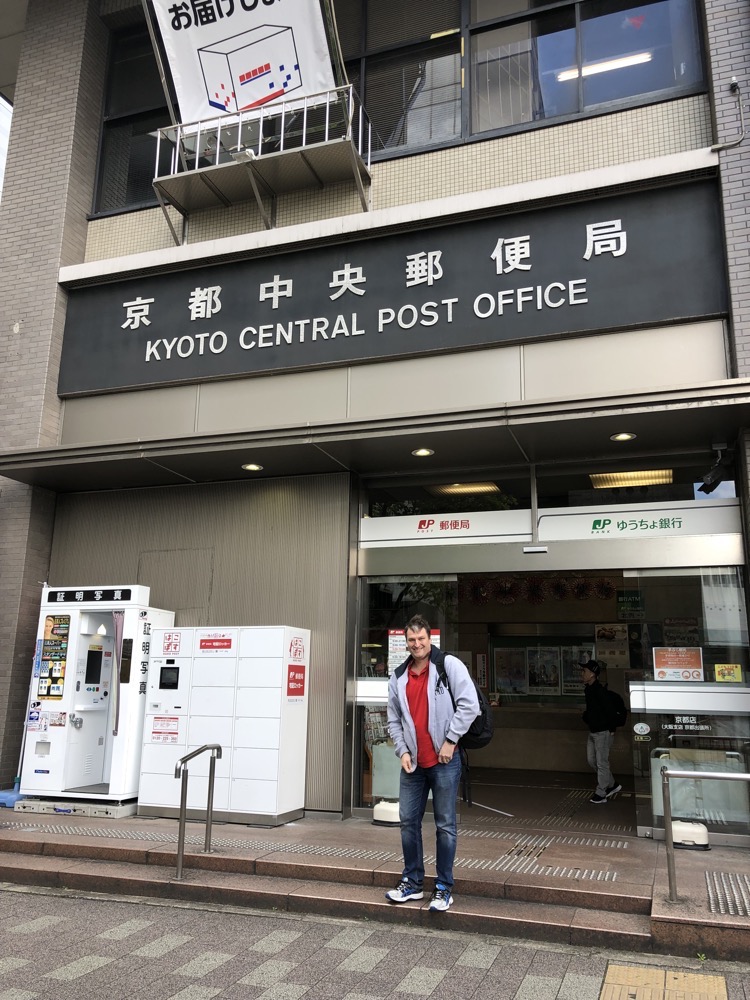
We hopped a cab down to the Gion district, and having rushed off the ship at 07:30 we thought it was time to find some breakfast now that it was well past midday. We found a wee strange okonomiyaki place not far from the Minamiza Theatre and stopped in for some quick and delicious okonomiyaki and sake, while enjoying the kooky pop culture decor. I didn’t remember to take a photo of this, but several of the tables in the restaurant had life-sized mannequins, dressed in traditional yakuta seated at the tables? I realised as we were leaving that diners who happened to be eating solo were sitting next to the mannequins and looked immediately like they were dining with a friend! It was bizarre, but I guess if you’re the sort of person who doesn’t enjoying eating out alone, maybe it works? Who knows? 🙂 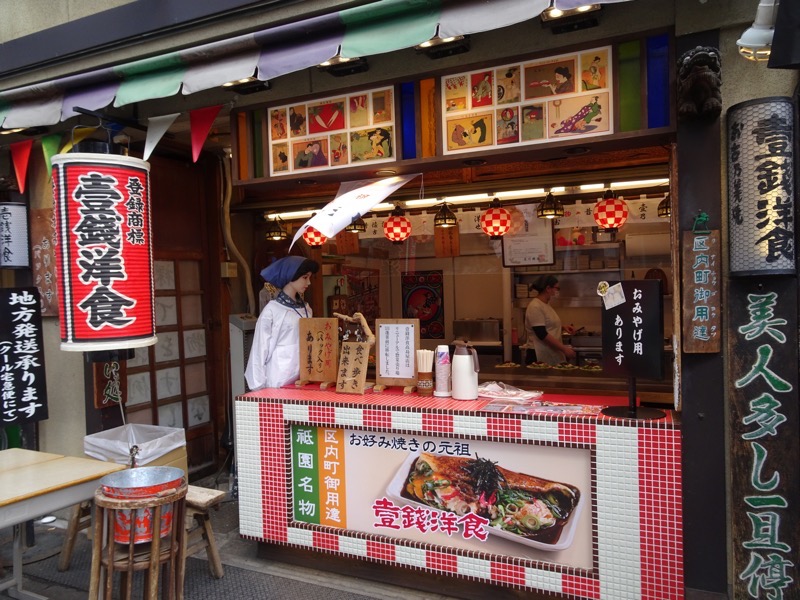
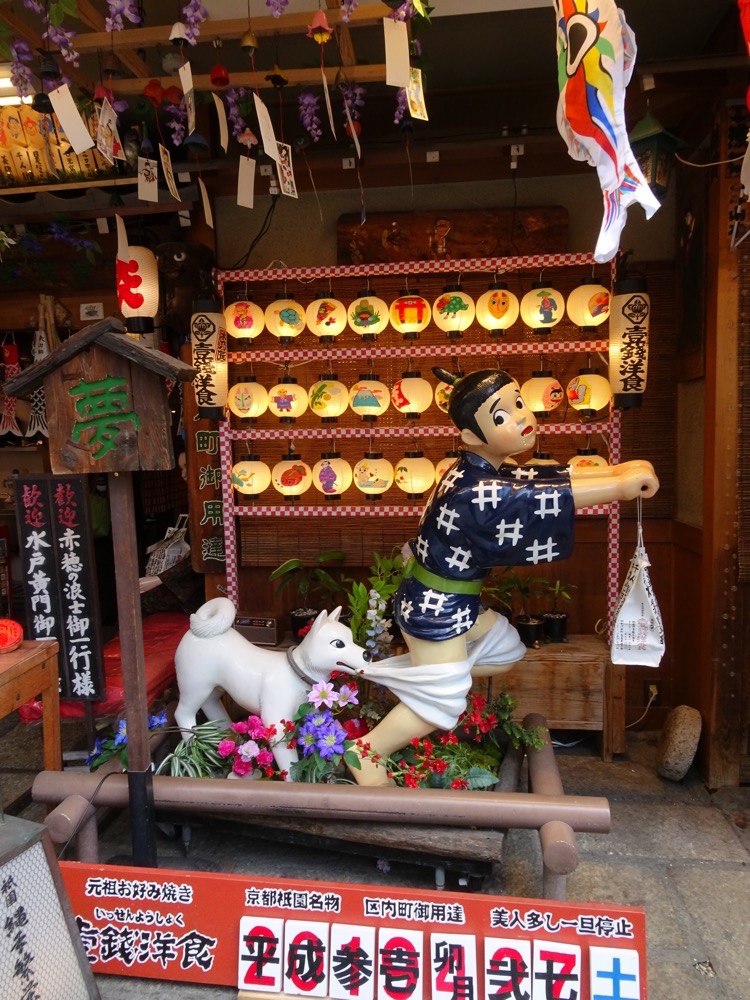
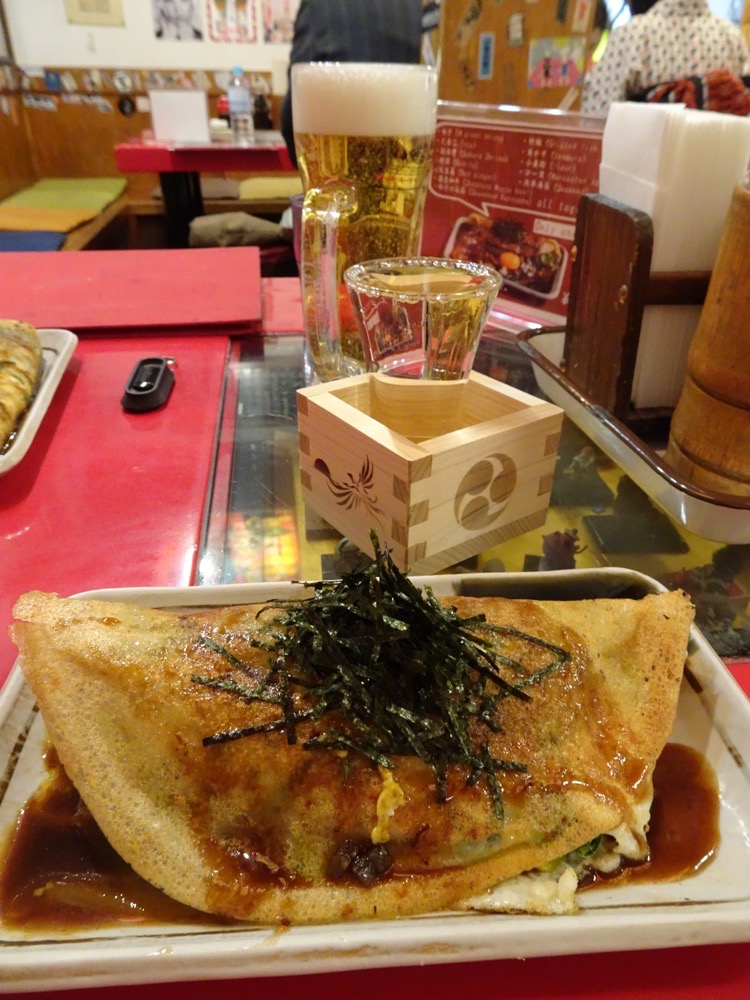 The Miyako Odori spring dances have been held at the Minimaza theatre (which was built in the 1600s) since the late 1800s. The place has quite a history and each year the dances are designed to celebrate the spring/cherry blossom season and to show off the talent of the maiko – the apprentice geisha who grace the Hanamachi, (the ‘Flower Town’ pleasure district) of Gion that is full of historic ochaya (teahouses) and okiya (geisha houses).
The Miyako Odori spring dances have been held at the Minimaza theatre (which was built in the 1600s) since the late 1800s. The place has quite a history and each year the dances are designed to celebrate the spring/cherry blossom season and to show off the talent of the maiko – the apprentice geisha who grace the Hanamachi, (the ‘Flower Town’ pleasure district) of Gion that is full of historic ochaya (teahouses) and okiya (geisha houses).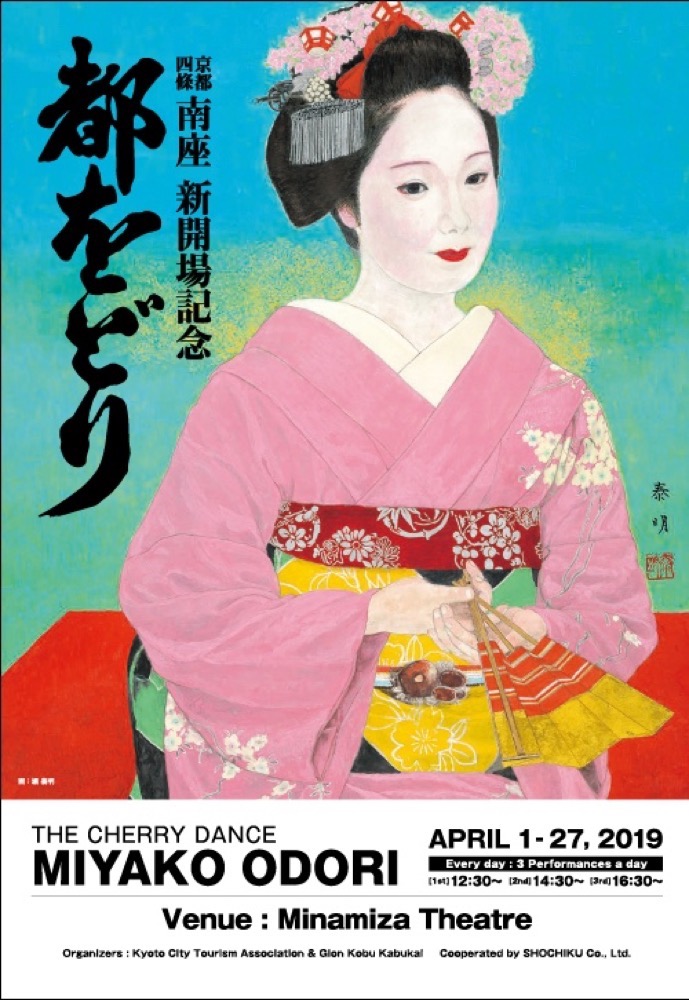
There is quite a lot that can be said about the Miyako Odori, and the Minamiza Theatre, but rather than bastardise it all with my interpretation – here is a blurb from the official website for this year’s dances:
“Highlighting the springtime atmosphere, “Miyako Odori” is performed in the newly renovated Minamiza Theatre where festive kaomise kabuki marked the end with a great success.
In order to celebrate the reopening of the Minamiza Theatre located in the birthplace of kabuki, this year’s theme is entitled “Miyohajime Kabuki no Irodori” (displaying places of interest of Kyoto in the new era, depicting scenes especially related to the theatre, and geiko and maiko perform a dance with a wish of happiness and prosperity of the new Emperor to be enthroned in May.)
“Miyako Odori first held in 1872 is a beautiful dance performance of eight scenes which begins with the unique loud call “Yoi Ya- Sa-” and all performers dance together in front of sliding screens put on silver foil, representing a court noble house. The dance, this year, progresses from the scene of “Shijo Kawaramachi” the birthplace of kabuki, “Katsura Imperial Villa.” “Gian Chaya.” and other places of scenic beauty and historic interest in the vicinity of the Minamiza Theatre and in connection with the Imperial Family, and the finale comes with a scene of cherry blossoms in full bloom at Daikakuji Temple.
“Miyako Odori” featuring Kyoto’s four seasons has been shown for more than 140 years; please enjoy the elaborate stage by maiko and geiko in the traditional Minamiza Theatre.”
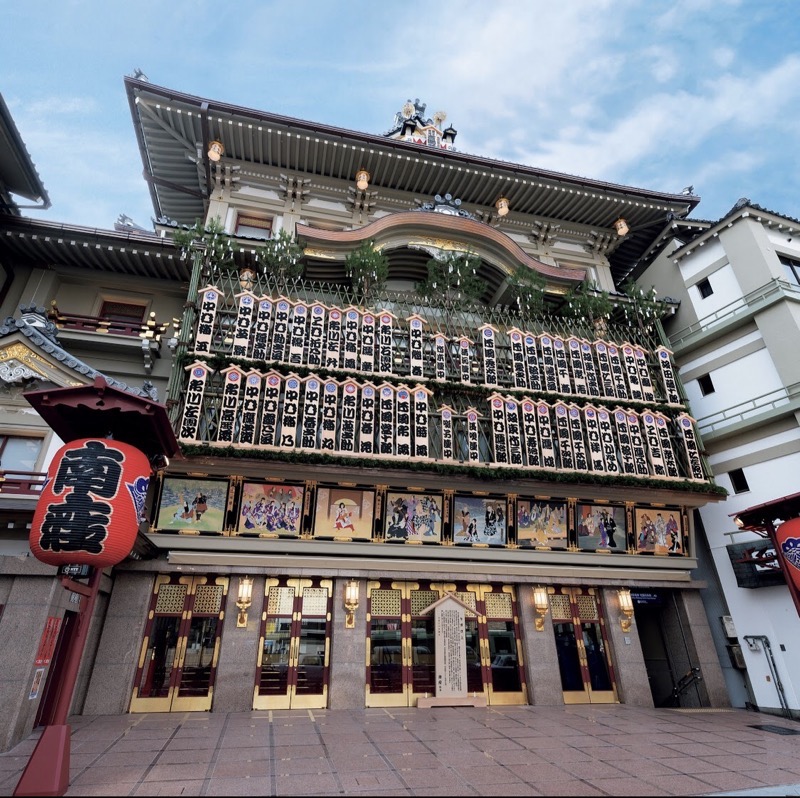
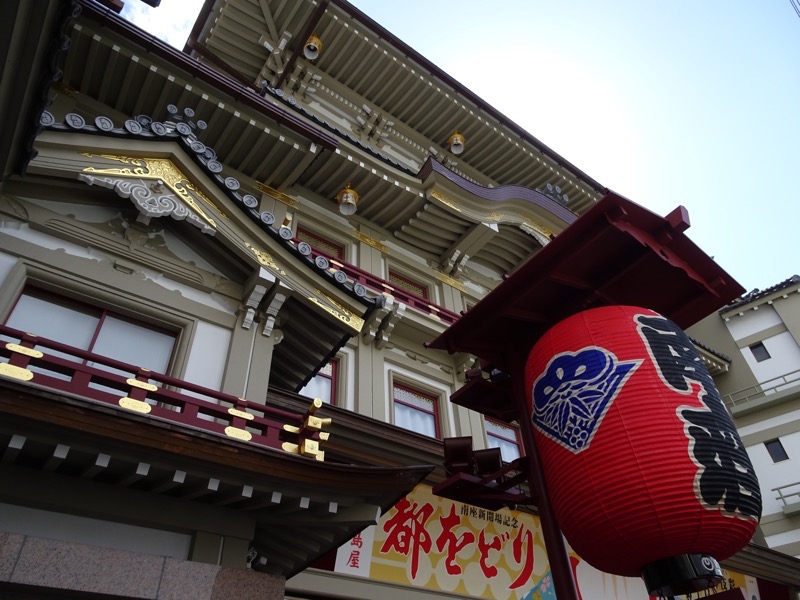 I remember these kimono from when we were last in Kyoto in 2015 – we visited an exhibition called ‘The Maiko Story’ that highlighted the history and traditions of the lives of the maiko and geiko that grace Gion. Today we would get to see the maiko dancing in them. That ‘Maiko Story’ is HERE if anyone is interested.
I remember these kimono from when we were last in Kyoto in 2015 – we visited an exhibition called ‘The Maiko Story’ that highlighted the history and traditions of the lives of the maiko and geiko that grace Gion. Today we would get to see the maiko dancing in them. That ‘Maiko Story’ is HERE if anyone is interested.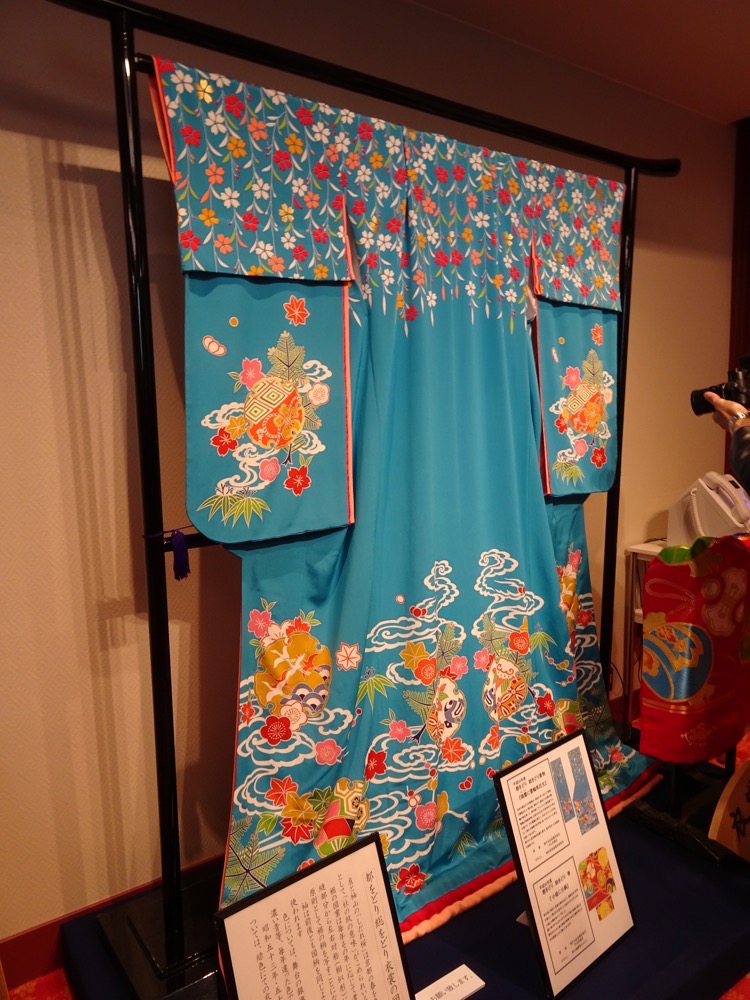
Inside the newly renovated theatre, we found our seats with some assistance – we were situated in the third balcony and as you might expect, accommodations are not as generous as we have become accustomed to in modern public theatres. Our seats were up steep steps and even though I am barely 5′ tall, my knees were pressed up against the seat in front of me. Mr K at 6′ tall didn’t have a hope… even manspreading couldn’t help him. He ended up watching the performance sitting to his side with his legs in the aisle beside him.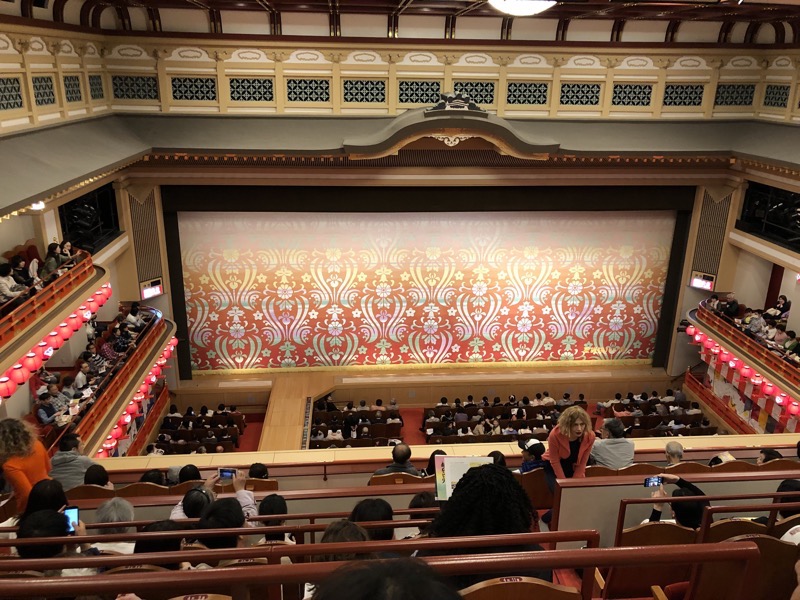 There is no photography allowed in the theatre during performances, so I have ‘borrowed’ some images from official promotional material and ever helpful Wikipedia. The costumes were lovely, the dancing was precise, graceful and exactly what I expected to see from these highly trained artisans. The music, however, was at various points during the performance ear piercingly painful! The flutes, they’re so high! Ouch. The singing too, while not as bad as the caterwauling we experienced at various cultural performances in China, was likewise not always ‘pleasant’. Still, it was quite the visual spectacle and it was wonderful to add this quintessentially Japanese experience to our ‘When in Rome’ List.
There is no photography allowed in the theatre during performances, so I have ‘borrowed’ some images from official promotional material and ever helpful Wikipedia. The costumes were lovely, the dancing was precise, graceful and exactly what I expected to see from these highly trained artisans. The music, however, was at various points during the performance ear piercingly painful! The flutes, they’re so high! Ouch. The singing too, while not as bad as the caterwauling we experienced at various cultural performances in China, was likewise not always ‘pleasant’. Still, it was quite the visual spectacle and it was wonderful to add this quintessentially Japanese experience to our ‘When in Rome’ List.

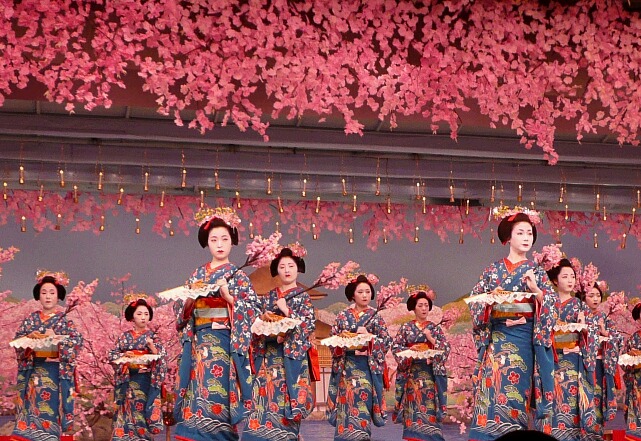 The final scene was quite the spectacle with all the performers returning to the stage and dancing in unison – except for two obviously very senior geiko who seemed to be marching to their own tune.
The final scene was quite the spectacle with all the performers returning to the stage and dancing in unison – except for two obviously very senior geiko who seemed to be marching to their own tune.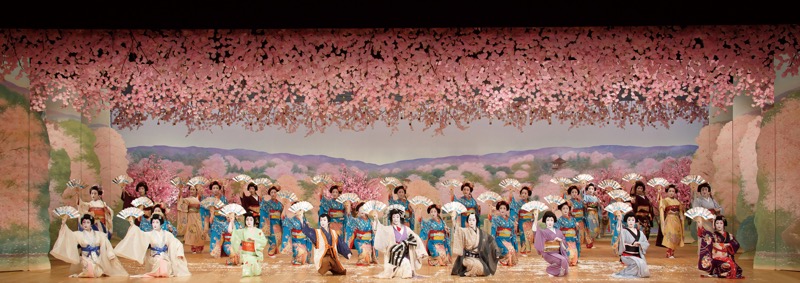
1_fvde-2f.jpg) After the performance was over we hopped another cab back to the Post Office to collect the luggage and made our way back to the Shinkansen to catch a train to Osaka. Thankfully, we didn’t have much trouble finding seats – it is the Tokyo to Kyoto segment that seems to be super popular at the moment and we were not surprised given it is Golden Week.
After the performance was over we hopped another cab back to the Post Office to collect the luggage and made our way back to the Shinkansen to catch a train to Osaka. Thankfully, we didn’t have much trouble finding seats – it is the Tokyo to Kyoto segment that seems to be super popular at the moment and we were not surprised given it is Golden Week.
We made our way to our hotel, called Hotel Samurai, which was chosen less for its location (I usually make all accommodation choices based on location!) and instead was chosen for its size. We are here for a whole week and have some work to do whlie we are here, so there is no way we wanted to be doing it in an APA Hotel shoe-box of a room. Our suite turned out to be about the size of my living room/study at home – about 6m x 4.5m – and has a king sized bed, a double sized bed, a futon bed a kitchenette and a huge ensuite bathroom with a spa bath tub. It was booked so long ago I forgot about all that!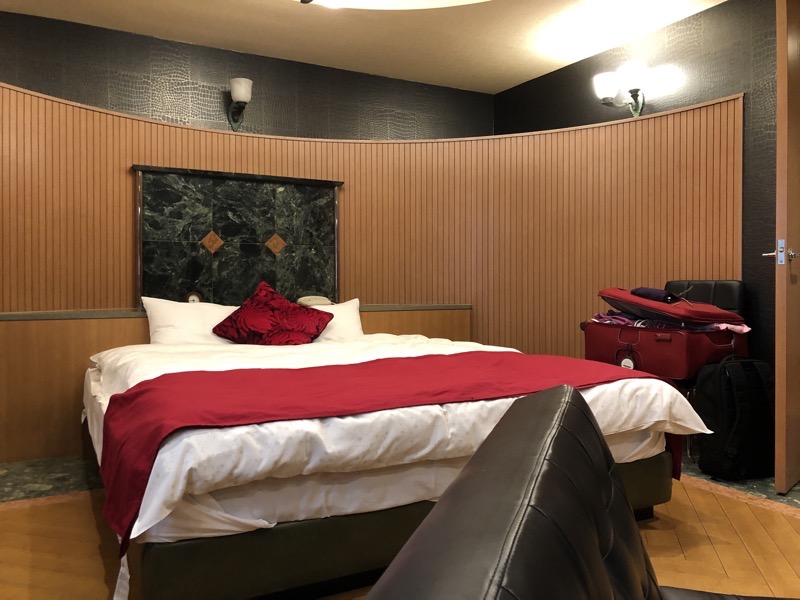 After we got settled, we were a bit shattered to be honest (that is what you get for breaking the Travel Rules), so Keith popped out for some milk to make tea and some sake for well,…for obvious reasons really! Eventually, we opted to go out for a late dinner and we ended up at a restaurant called Shinanosuke Ueroku, located across the road from the Osaka-Uehommachi train station. It was the over the top display of sake bottles at the front door that sucked us in!
After we got settled, we were a bit shattered to be honest (that is what you get for breaking the Travel Rules), so Keith popped out for some milk to make tea and some sake for well,…for obvious reasons really! Eventually, we opted to go out for a late dinner and we ended up at a restaurant called Shinanosuke Ueroku, located across the road from the Osaka-Uehommachi train station. It was the over the top display of sake bottles at the front door that sucked us in!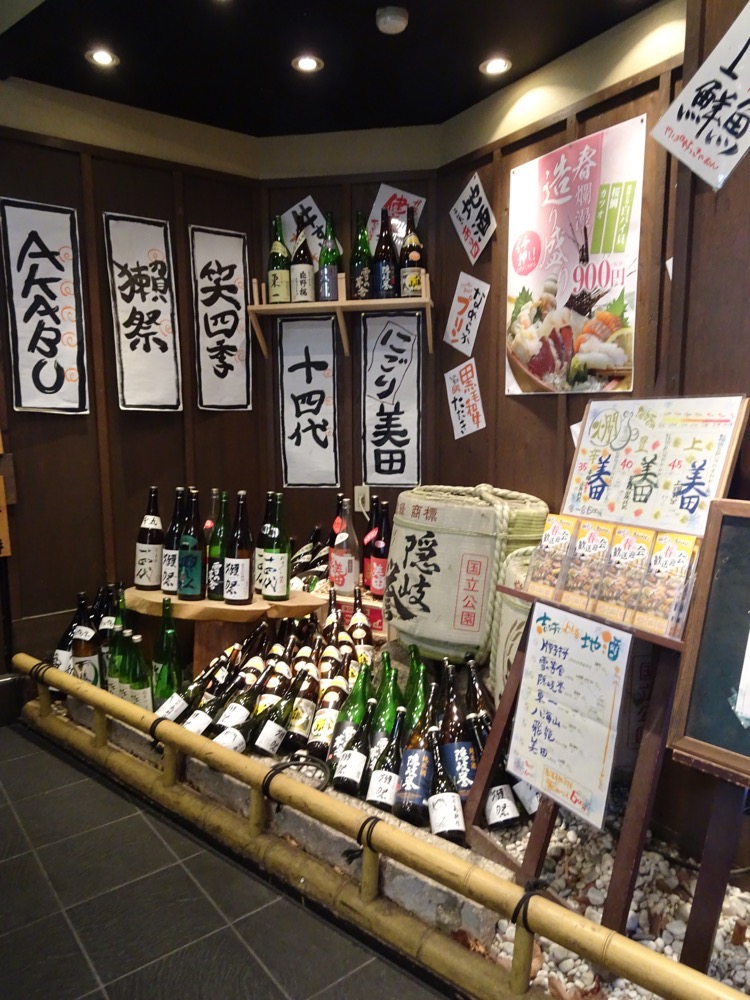 Dinner was a delicious boat of fresh sashimi, some takoyaki and yakitori and of course sake! (If it looks like I am using alcohol to help me sleep in the absence of some of my medications and my own bed – that is probably because I am!)
Dinner was a delicious boat of fresh sashimi, some takoyaki and yakitori and of course sake! (If it looks like I am using alcohol to help me sleep in the absence of some of my medications and my own bed – that is probably because I am!)
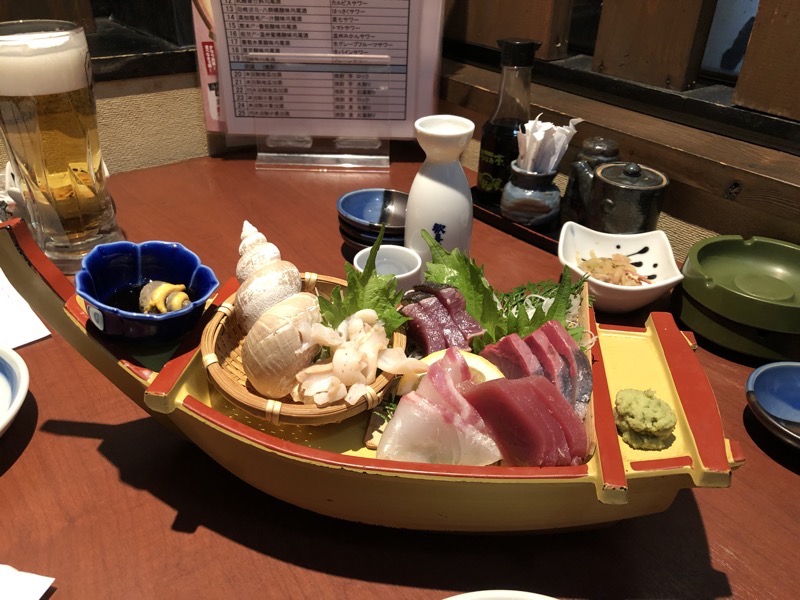 The place has a lively atmosphere, a lot of laughter from the rabbit warren of individual little dining rooms, and the free-flowing liquor. If it weren’t for the Japanese propensity to let people still smoke cigarettes in these types of restaurants, I’d say it was a perfect fun spot with great food and we’ll be back – but, there are too many other places to try and if we can find great food sans smoking, we’d much prefer it.
The place has a lively atmosphere, a lot of laughter from the rabbit warren of individual little dining rooms, and the free-flowing liquor. If it weren’t for the Japanese propensity to let people still smoke cigarettes in these types of restaurants, I’d say it was a perfect fun spot with great food and we’ll be back – but, there are too many other places to try and if we can find great food sans smoking, we’d much prefer it. 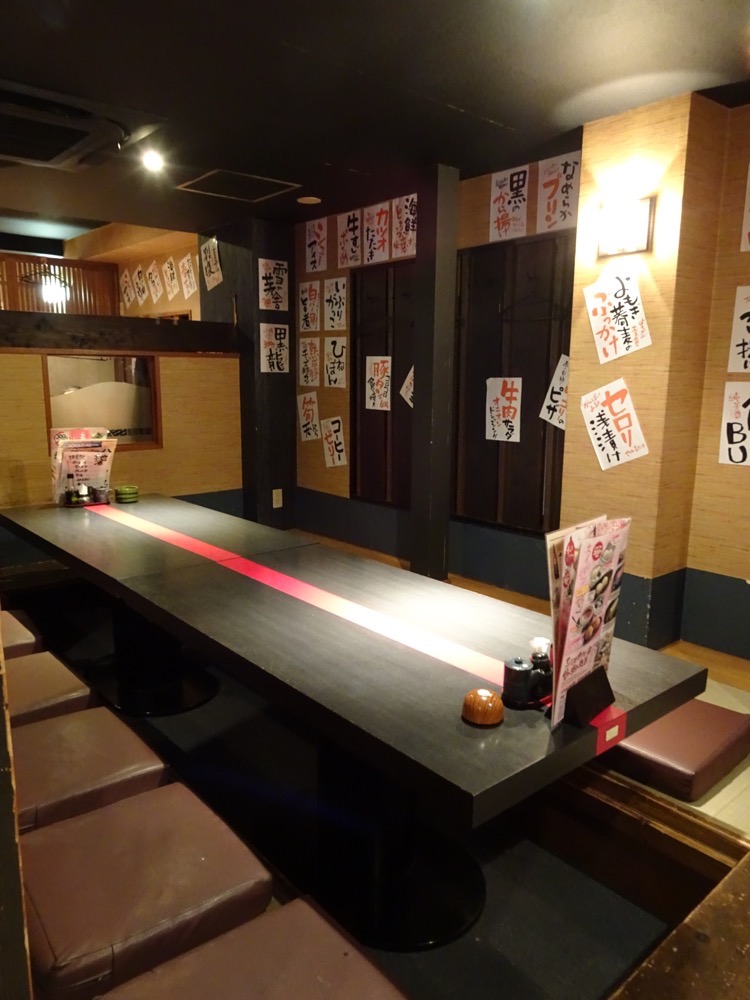
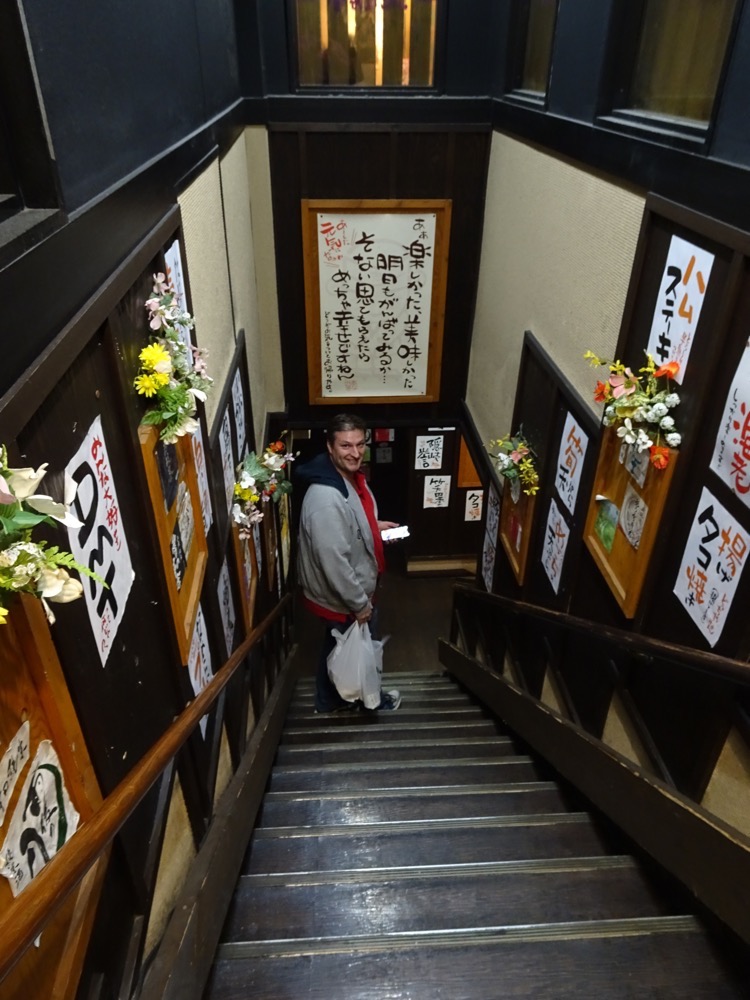 Then, it was time to head back to the hotel, write all this guff up before we have new adventures tomorrow and I forget all about the details of today.
Then, it was time to head back to the hotel, write all this guff up before we have new adventures tomorrow and I forget all about the details of today.
In short, we totally broke the Travel Rule of Transit Days today – but it was totally worth it! I’m going to sleep like a log tonight.

 Some cool artworks depicting the Castle over the various periods, unfortunately, all the descriptions were :
Some cool artworks depicting the Castle over the various periods, unfortunately, all the descriptions were :





 The Shokanzeonbosatsu Temple inside the grounds of Osaka Castle.
The Shokanzeonbosatsu Temple inside the grounds of Osaka Castle.



 The Main Tower of Osaka Castle Park was built in by Hideyoshi Toyotomi in 1583, however, it was not completed until after his death. During the Summer War of 1615, (Toyotomi family vs Tokugawa family) the tower was burned down and rebuilt in 1629. Unfortunately, it was destroyed again in 1665 when it was burned to the ground after being struck by lightning. In 1931, through the donations of the citizens of Osaka, the main town was reconstructed – which is the tower able to be seen today.
The Main Tower of Osaka Castle Park was built in by Hideyoshi Toyotomi in 1583, however, it was not completed until after his death. During the Summer War of 1615, (Toyotomi family vs Tokugawa family) the tower was burned down and rebuilt in 1629. Unfortunately, it was destroyed again in 1665 when it was burned to the ground after being struck by lightning. In 1931, through the donations of the citizens of Osaka, the main town was reconstructed – which is the tower able to be seen today. 
 Now we were aware that the grounds of Osaka Castle has over 4000 cherry blossom trees, but we are considerably south now from Aomori and Hirosaki Castel, and the cherry blossom blooming has been and gone. The trees are all green and people will have to wait until next year to see these parks in all their glory. The only sign we saw at all that indicated how famous this site is for its blossoms was this dried arrangement that was outside a Moet et Chandon tasting tent. I can imagine it would be stunning, the flowers here being more of the pink varieties of cherry blossom rather than the later blooming ones in Aomori. Seeing how fleeing the flowering season is (barely a week this way or that) I feel doubly lucky to have spent such a fairy tale day on our anniversary enjoying a hanami picnic at Hirosaki last Wednesday.
Now we were aware that the grounds of Osaka Castle has over 4000 cherry blossom trees, but we are considerably south now from Aomori and Hirosaki Castel, and the cherry blossom blooming has been and gone. The trees are all green and people will have to wait until next year to see these parks in all their glory. The only sign we saw at all that indicated how famous this site is for its blossoms was this dried arrangement that was outside a Moet et Chandon tasting tent. I can imagine it would be stunning, the flowers here being more of the pink varieties of cherry blossom rather than the later blooming ones in Aomori. Seeing how fleeing the flowering season is (barely a week this way or that) I feel doubly lucky to have spent such a fairy tale day on our anniversary enjoying a hanami picnic at Hirosaki last Wednesday. Also near the Main Tower is a large modern shopping centre full of restaurants and souvenir shops. Some of the goods for sale were stunning and some of them redefining ‘tacky’. We had a wander through the shops and stopped for a takoyaki snack. Takoyaki seems to be a local favourite.
Also near the Main Tower is a large modern shopping centre full of restaurants and souvenir shops. Some of the goods for sale were stunning and some of them redefining ‘tacky’. We had a wander through the shops and stopped for a takoyaki snack. Takoyaki seems to be a local favourite. 
 These are ceramic chopstick rests made to look like foods:
These are ceramic chopstick rests made to look like foods: Weirdly, there was heaps of takoyaki designed souvenirs… with lots of happy looking squids and happy smiley balls of batter?!
Weirdly, there was heaps of takoyaki designed souvenirs… with lots of happy looking squids and happy smiley balls of batter?!


 The museum was a lovely modern facility – you work your way down from the 10th floor which starts off talking about excavations of the 7-8th C Naniwa Palace and works it way down to contemporary Osaka as you move down the floors.
The museum was a lovely modern facility – you work your way down from the 10th floor which starts off talking about excavations of the 7-8th C Naniwa Palace and works it way down to contemporary Osaka as you move down the floors. There are some gorgeous views from the upper floors of the Osaka Castle grounds and you can see really how imposing those moats were!
There are some gorgeous views from the upper floors of the Osaka Castle grounds and you can see really how imposing those moats were!
 There were various displays of decorative arts – scrolls, paintings, ceramics, some artefacts from the earliest periods of the area. But I generally felt the museum was light on extant items and relied fairly heavily on interactive displays and recreated objects.
There were various displays of decorative arts – scrolls, paintings, ceramics, some artefacts from the earliest periods of the area. But I generally felt the museum was light on extant items and relied fairly heavily on interactive displays and recreated objects.



 Traditional writing desk for writers of the Bunraku puppet theatres:
Traditional writing desk for writers of the Bunraku puppet theatres:
 The Beauties by Tukioka Settei, 18th C.
The Beauties by Tukioka Settei, 18th C. Apes and wasp by Mori Sosen, 18th – 19th C.
Apes and wasp by Mori Sosen, 18th – 19th C. Funghi and Parrot by Mitani Totei, 18th C… though for the life of me I can’t figure out why there is an Australian sulphur-crested cockatoo depicted on an 18th C Japanese scroll!
Funghi and Parrot by Mitani Totei, 18th C… though for the life of me I can’t figure out why there is an Australian sulphur-crested cockatoo depicted on an 18th C Japanese scroll!

 Flag with signatures for a Japanese soldier,1938.
Flag with signatures for a Japanese soldier,1938.
 Votive plaques from the late 19th C.
Votive plaques from the late 19th C.

 Now, everyone, knows transit days suck balls… big hairy sweaty ones on occasion, and this is why the No 1 Golden Rule of Travel is: Never plan to go sightseeing on transit days! So what did these very well travelled individuals plan for today? Well, we broke the stupid rule and planned to disembark the ship in Yokohama, take a train to Kyoto, put our luggage in storage, and go to the famous Minamiza Theatre in Gion to see the Mikayo Odori Spring Dances. It’s barely a 20 minute trip on the Shinkansen from Osaka to Kyoto, and ideally, we would have come back at some point over the next week to see this uniquely Japanese cultural experience – but the season quite literally ends today, and we were able to buy tickets for the second last performance for 2019. So here we were, breaking the Travel Rules.
Now, everyone, knows transit days suck balls… big hairy sweaty ones on occasion, and this is why the No 1 Golden Rule of Travel is: Never plan to go sightseeing on transit days! So what did these very well travelled individuals plan for today? Well, we broke the stupid rule and planned to disembark the ship in Yokohama, take a train to Kyoto, put our luggage in storage, and go to the famous Minamiza Theatre in Gion to see the Mikayo Odori Spring Dances. It’s barely a 20 minute trip on the Shinkansen from Osaka to Kyoto, and ideally, we would have come back at some point over the next week to see this uniquely Japanese cultural experience – but the season quite literally ends today, and we were able to buy tickets for the second last performance for 2019. So here we were, breaking the Travel Rules.


 The Miyako Odori spring dances have been held at the Minimaza theatre (which was built in the 1600s) since the late 1800s. The place has quite a history and each year the dances are designed to celebrate the spring/cherry blossom season and to show off the talent of the maiko – the apprentice geisha who grace the Hanamachi, (the ‘Flower Town’ pleasure district) of Gion that is full of historic ochaya (teahouses) and okiya (geisha houses).
The Miyako Odori spring dances have been held at the Minimaza theatre (which was built in the 1600s) since the late 1800s. The place has quite a history and each year the dances are designed to celebrate the spring/cherry blossom season and to show off the talent of the maiko – the apprentice geisha who grace the Hanamachi, (the ‘Flower Town’ pleasure district) of Gion that is full of historic ochaya (teahouses) and okiya (geisha houses).

 I remember these kimono from when we were last in Kyoto in 2015 – we visited an exhibition called ‘The Maiko Story’ that highlighted the history and traditions of the lives of the maiko and geiko that grace Gion. Today we would get to see the maiko dancing in them.
I remember these kimono from when we were last in Kyoto in 2015 – we visited an exhibition called ‘The Maiko Story’ that highlighted the history and traditions of the lives of the maiko and geiko that grace Gion. Today we would get to see the maiko dancing in them. 
 There is no photography allowed in the theatre during performances, so I have ‘borrowed’ some images from official promotional material and ever helpful Wikipedia. The costumes were lovely, the dancing was precise, graceful and exactly what I expected to see from these highly trained artisans. The music, however, was at various points during the performance ear piercingly painful! The flutes, they’re so high! Ouch. The singing too, while not as bad as the caterwauling we experienced at various cultural performances in China, was likewise not always ‘pleasant’. Still, it was quite the visual spectacle and it was wonderful to add this quintessentially Japanese experience to our ‘When in Rome’ List.
There is no photography allowed in the theatre during performances, so I have ‘borrowed’ some images from official promotional material and ever helpful Wikipedia. The costumes were lovely, the dancing was precise, graceful and exactly what I expected to see from these highly trained artisans. The music, however, was at various points during the performance ear piercingly painful! The flutes, they’re so high! Ouch. The singing too, while not as bad as the caterwauling we experienced at various cultural performances in China, was likewise not always ‘pleasant’. Still, it was quite the visual spectacle and it was wonderful to add this quintessentially Japanese experience to our ‘When in Rome’ List.
 The final scene was quite the spectacle with all the performers returning to the stage and dancing in unison – except for two obviously very senior geiko who seemed to be marching to their own tune.
The final scene was quite the spectacle with all the performers returning to the stage and dancing in unison – except for two obviously very senior geiko who seemed to be marching to their own tune.
1_fvde-2f.jpg) After the performance was over we hopped another cab back to the Post Office to collect the luggage and made our way back to the Shinkansen to catch a train to Osaka. Thankfully, we didn’t have much trouble finding seats – it is the Tokyo to Kyoto segment that seems to be super popular at the moment and we were not surprised given it is Golden Week.
After the performance was over we hopped another cab back to the Post Office to collect the luggage and made our way back to the Shinkansen to catch a train to Osaka. Thankfully, we didn’t have much trouble finding seats – it is the Tokyo to Kyoto segment that seems to be super popular at the moment and we were not surprised given it is Golden Week. After we got settled, we were a bit shattered to be honest (that is what you get for breaking the Travel Rules), so Keith popped out for some milk to make tea and some sake for well,…for obvious reasons really! Eventually, we opted to go out for a late dinner and we ended up at a restaurant called
After we got settled, we were a bit shattered to be honest (that is what you get for breaking the Travel Rules), so Keith popped out for some milk to make tea and some sake for well,…for obvious reasons really! Eventually, we opted to go out for a late dinner and we ended up at a restaurant called  Dinner was a delicious boat of fresh sashimi, some takoyaki and yakitori and of course sake! (If it looks like I am using alcohol to help me sleep in the absence of some of my medications and my own bed – that is probably because I am!)
Dinner was a delicious boat of fresh sashimi, some takoyaki and yakitori and of course sake! (If it looks like I am using alcohol to help me sleep in the absence of some of my medications and my own bed – that is probably because I am!) The place has a lively atmosphere, a lot of laughter from the rabbit warren of individual little dining rooms, and the free-flowing liquor. If it weren’t for the Japanese propensity to let people still smoke cigarettes in these types of restaurants, I’d say it was a perfect fun spot with great food and we’ll be back – but, there are too many other places to try and if we can find great food sans smoking, we’d much prefer it.
The place has a lively atmosphere, a lot of laughter from the rabbit warren of individual little dining rooms, and the free-flowing liquor. If it weren’t for the Japanese propensity to let people still smoke cigarettes in these types of restaurants, I’d say it was a perfect fun spot with great food and we’ll be back – but, there are too many other places to try and if we can find great food sans smoking, we’d much prefer it. 
 Then, it was time to head back to the hotel, write all this guff up before we have new adventures tomorrow and I forget all about the details of today.
Then, it was time to head back to the hotel, write all this guff up before we have new adventures tomorrow and I forget all about the details of today.